From our museums in Washington, DC and New York City, to our traveling exhibitions in venues closer to home,
to our website and mobile apps, you will always find something worthwhile to discover and enjoy.
This 2024 pocket guide offers a small sample of the thousands of things to see and do at the
Smithsonian this year, all made possible thanks to the support of people like you.

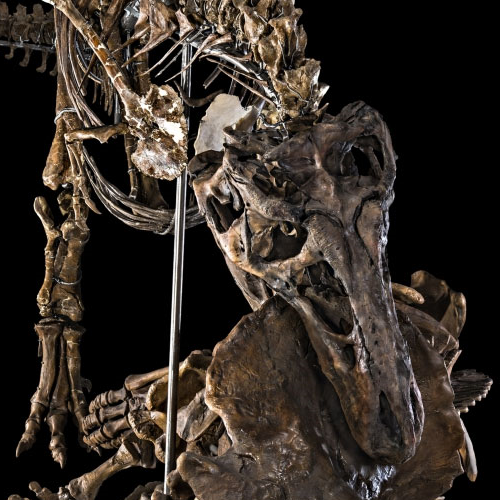
June 8, 2019 - Permanent, National Museum of Natural History
The new David H. Koch Hall of Fossils showcases the museum's unrivaled collection of 46 million fossils re-positioned in new, dramatic, more scientifically-accurate positions, and presents the most up-to-date scientific research on how life on Earth has evolved.
Find out more »
Take me there »

September 24, 2016 - Permanent, National Museum of African American History and Culture
As the centerpiece of the museum, this exhibition explores the complex story of slavery and freedom, a story standing at the core of our national experience.
Find out more »
Take me there »

Summer 2017 - Permanent, National Museum of American History
At the heart of this nation lies a great search for balance between unity and pluralism. Many Voices: One Nation presents the five-hundred-year journey of how many distinct peoples and cultures met, mingled and created the culture of the United States.
Find out more »
Take me there »

January 18, 2018 – 2027, National Museum of the American Indian
American Indian represent less than 1 percent of the U.S. population, yet names and images of Indians are everywhere: military weapons, town names, advertising and that holiday in November. American invites visitors to take a closer look, and to ask why.
Find out more »
Take me there »
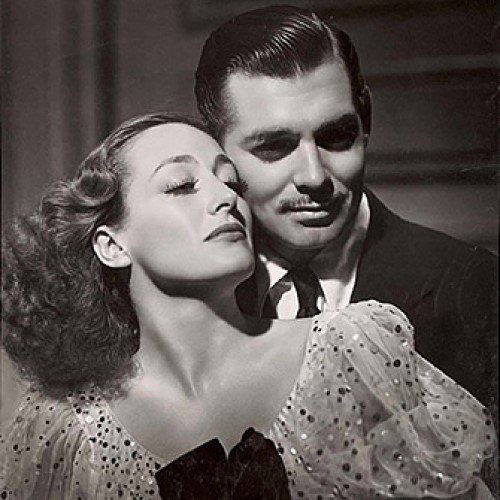
March 1, 2024 - January 5, 2025, National Portrait Gallery
Widely regarded as the preeminent Hollywood portrait photographer of the 1930s and 1940s, George Hurrell (1904-1992) created definitive, timeless images of many of the most glamorous figures of filmdom’s golden era. Hurrell began his Hollywood career in 1930 as a photographer for Metro-Goldwyn-Mayer, the studio (founded in 1924) that claimed to have “more stars than there are in heaven.” With a keen eye for lighting effects and artful posing, he developed a style of presentation that magnified the stars and influenced popular standards of glamour. Advancing rapidly to become MGM’s in-house portraitist, he produced memorable images of film royalty, from Greta and Clark Gable to Spencer Tracy and Joan Crawford. He established his own studio on Sunset Boulevard in 1933, where he continued to photograph actors for MGM as well as those under contract with other major studios. After closing his studio in 1938, Hurrell concluded the decade as the head of photography for Warner Bros. Selected from the National Portrait Gallery’s collection by senior curator of photographs Ann Shumard, this exhibition features golden-era portraits that reveal Hurrell’s skill in shaping the images of Hollywood’s brightest stars.
Find out more »
Take me there »
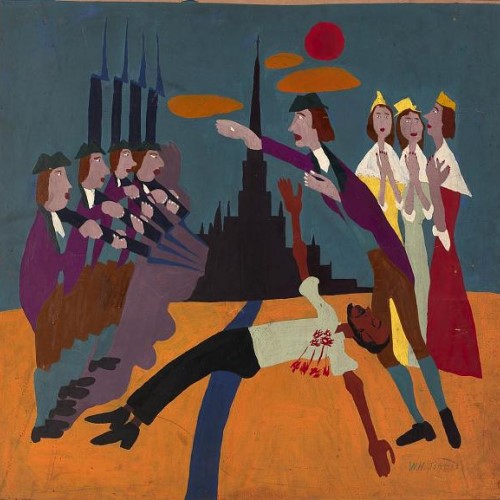
March 8, 2024 - September 8, 2024, Smithsonian American Art Museum
William H. Johnson painted the Fighters for Freedom series in the mid-1940s as a tribute to African American activists, scientists, teachers, and performers as well as international heads of state working to bring peace to the world. The exhibition Fighters for Freedom: William H. Johnson and the Struggle for Social Justice is drawn entirely from the collection of more than 1,000 works by William H. Johnson given to the Smithsonian American Art Museum by the Harmon Foundation in 1967 and reminds us that individual achievement and commitment to social justice are at the heart of the American story.
Find out more »
Take me there »
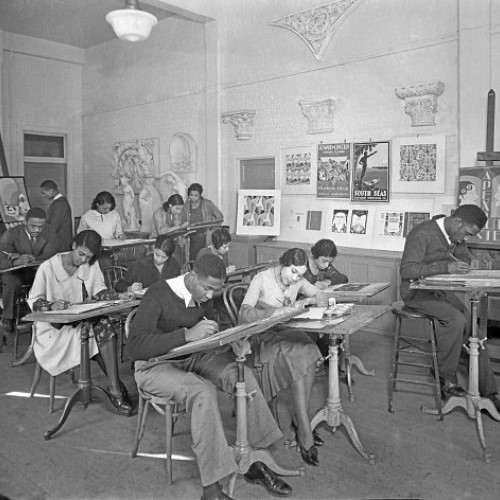
March 23, 2024 March 2, 2025, Anacostia Community Museum
Outside the spotlight of the nation’s major museums and galleries, and in a longtime segregated school system, African American artist-educators in twentieth-century Washington, D.C., achieved the extraordinary. Unified not by a singular aesthetic vision but by a bold and deeply held commitment to inspiring a love of the arts in young people, these artists shared their gifts with their students in the face of the seemingly insurmountable challenges of underfunding, overcrowding, and being overlooked. Some of the country’s most gifted artists taught and were taught in Washington’s educational institutions, from small community centers to university classrooms. They included such visionaries whose names are today both well-known and not-so-well-known: Elizabeth Catlett, Alma Thomas, James A. Porter, Loīs Mailou Jones, David Driskell, Hilda Wilkinson Brown, Thomas Hunster, and Georgette Seabrooke Powell, to name only a few. This exhibition traces the story of the teachers and students who made Washington, D.C., a truly unparalleled center for Black arts education. A Bold and Beautiful Vision features captivating original artworks, rare video footage, and awe-inspiring artistic artifacts, like Alma Thomas’s paintbrushes and watercolor paint set, an early 20th-century lifelike marionette that William Buckner made with his local high school students, original Elizabeth Catlett prints that once hung in the halls of her Washington high school, and Sam Gilliam artwork from the period when he was teaching at McKinley Technical High School. Come see the artwork and hear the voices of the African American artist-educators who enriched the lives of many generations of Washington’s young people and who—along with their students—produced work admired by audiences across the globe.
Find out more »
Take me there »
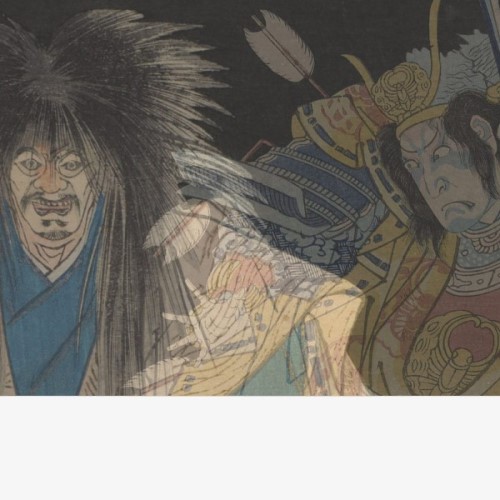
March 23, 2024 - October 6, 2024, Arthur M. Sackler Gallery
Throughout Japanese cultural history, the boundary between the real world and the world of supernatural beings has been remarkably porous. Certain sites, states of mind, or periods in the lunar cycle made humans particularly vulnerable to ghostly intervention. The Edo period (1603-1868) was a crucial stage in the development and solidification of ideas about the supernatural. Many of the beliefs that gained currency at this time are still held as conventional wisdom in Japan today. Supernatural entities came to life especially during noh and kabuki theater performances. Explore—if you dare—the roles that ghosts and spirits play in the retelling of Japanese legends and real events. Staging the Supernatural brings together a collection of vibrant, colorful woodblock prints and illustrated books depicting the specters that haunt these two theatrical traditions.
Find out more »
Take me there »
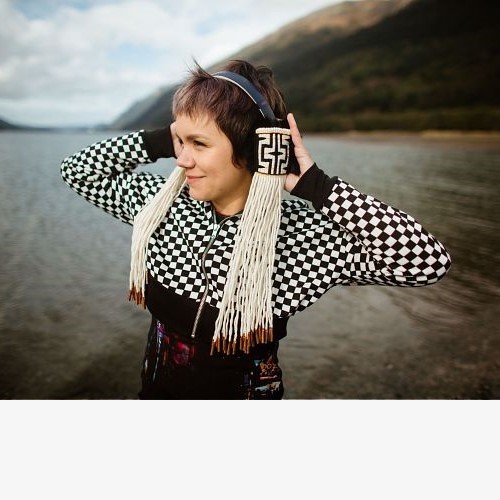
May 26, 2023 - March 31, 2024, Renwick Gallery of the Smithsonian American Art Museum
The Renwick Invitational 2023 features artists Joe Feddersen (Arrow Lakes/Okanagan), Lily Hope (Tlingit), Ursala Hudson (Tlingit), Erica Lord (Athabaskan/Iņupiat), Geo Neptune (Passamaquoddy), and Maggie Thompson (Fond du Lac Ojibwe). Together, these artists present a fresh and nuanced vision of Native American art. The artists were selected for their work that expresses the honors and burdens that Native artists balance as they carry forward their cultural traditions. These artists highlight principles of respect, reciprocity, and responsibility through their work that addresses themes of environmentalism, displacement, and cultural connectedness.
Find out more »
Take me there »
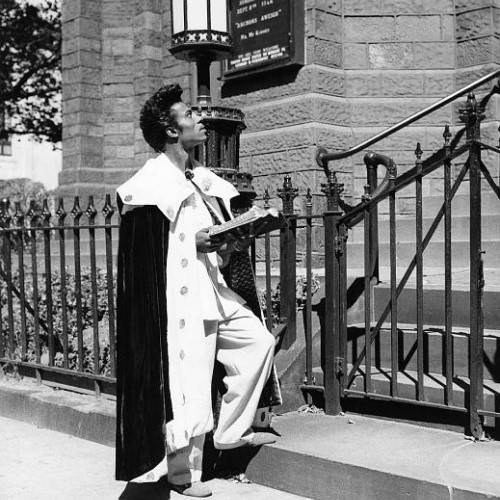
November 18, 2022 - April 7, 2024 , National Museum of African American History and Culture
Spirit in the Dark examines Black religious life through a selection of photographs from the Johnson Publishing Company, publisher of Ebony, Jet, and Negro Digest. The images in the exhibition spotlight noteworthy individuals—including religious and political leaders, musicians, authors, athletes, activists, and educators—and uplift objects from the museum’s collection, many on display for the first time. Together they reflect diverse aspects of the Black religious experience and testify to the role religion has played in the struggle for human dignity and social equality.
Find out more »
Take me there »
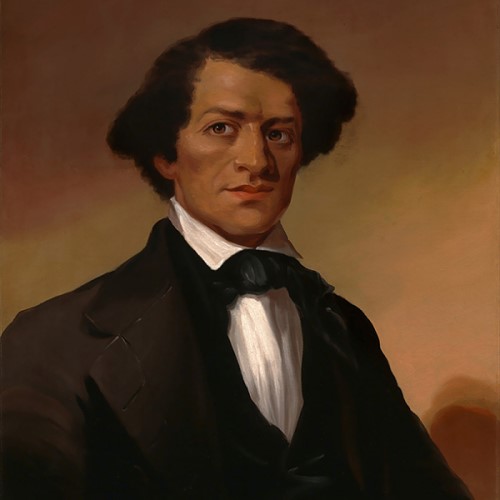
June 16, 2023 - April 21, 2024, National Portrait Gallery
One Life: Frederick Douglass illuminates the legacy of one of the 19th century’s most influential writers, speakers and intellectuals through prints, photographs, and ephemera. After escaping slavery in 1838, Douglass published three autobiographies and a novella, delivered thousands of speeches, and edited the longest continually running Black newspaper of the 19th century. Always a radical activist, Douglass devoted his life to abolitionism and “all rights for all.” A political insider and policy influencer during the Civil War, he befriended and advised President Lincoln. Crucially, Douglass changed traditional rules of representation by explaining how “true art” (as opposed to insidious caricatures) could be an engine of social change.
Find out more »
Take me there »
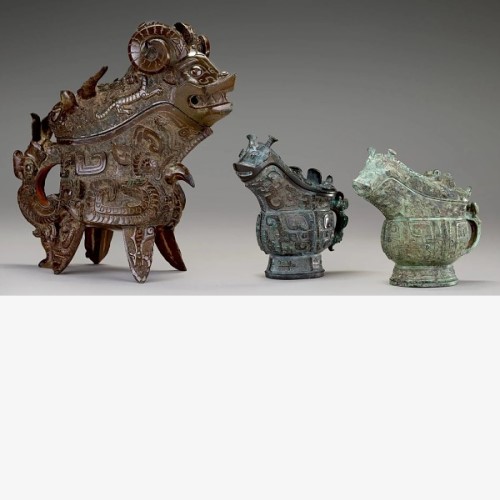
February 25, 2023 - April 28, 2024 , Arthur M. Sackler Gallery
Anyang: China’s Ancient City of Kings is the first major exhibition in the United States dedicated to Anyang, the capital of China’s Shang dynasty (occupied ca. 1250 BCE-ca. 1050 BCE). The source of China’s earliest surviving written records and the birthplace of Chinese archaeology, Anyang holds a special connection with the National Museum of Asian Art. In 1929, one year after Academia Sinica began archaeological work at the Bronze Age site, Li Chi assumed leadership of the excavations. At the time, he was also a staff member of the Freer Gallery of Art (192530). To promote archaeological practice in China, the Freer supported Li Chi and his first two seasons of work at Anyang. This collaboration, predicated on the advancement of scientific knowledge and the protection of cultural patrimony, marks an important chapter in the history of Sino-American relations. Anyang: China’s Ancient City of Kings features over two hundred remarkable artifacts—including jade ornaments, ceremonial weapons, ritual bronze vessels, bells, and chariot fittings—drawn exclusively from the museum’s permanent collection. Explore the early development of Chinese writing, enduring ritual practices, innovations in weaponry and warfare, advances in design and manufacturing, and the highly personal spaces of tombs, including objects chosen for the afterlife. The exhibition includes a series of digital activations developed in partnership with award-winning production studio UNIT9 that allows visitors to dive deeper into the life of the city.
Find out more »
Take me there »

National Museum of the American Indian
This cafe features Native foods found throughout the Western Hemisphere, including the Northern Woodlands, South America, the Northwest Coast, Meso America and the Great Plains.
Find out more »
Take me there »

National Museum of African American History and Culture
Sweet Home Café showcases the rich culture and history of the African American people with traditional, authentic offerings as well as present-day food traditions. * Access to the museum is limited and entry pass may be required
Find out more »
Take me there »

Smithsonian Castle
An assortment of fresh baked goods, gelato and fresh fruit makes the Castle Café the perfect place for a quick snack. The café also offers a seasonal selection of sandwiches, salads, and soups.
Find out more »
Take me there »

Hirshhorn Museum & Sculpture Garden
Located in the courtyard of the museum, Dolcezza offers locally sourced and handcrafted gelato, specialty espresso drinks, and gourmet pastries in a stunning contemporary setting designed by world-renowned artist Hiroshi Sugimoto.
Find out more »
Take me there »

Shaker Village of Pleasant Hill, Harrodsburg, Kentucky
March 2, 2024 - March 30, 2024
The story of human history is written in inventions and innovations. People are problem solvers. Sometimes we invent. More often, we innovate, introducing a fresh idea or an invention into use in some way that creates a new way of doing or thinking. Rural Americans are creating new products, processes and experiences that change local life and sometimes reach far beyond. Yet, invention and innovation truly flourishes in some places and not others. Why? Spark! Places of Innovation will be the springboard for diverse local programming in the humanities, sciences, and arts. Visitors will be inspired to learn about innovation has shaped their own communities and how they may be innovators themselves. This exhibition will be an opportunity for community members to come together in conversation around their community’s history, present, and future with innovation.
Find out more »
See tour schedule »

Buffalo County Historical Society, Kearney, Nebraska
March 2, 2024 - May 12, 2024
Water/Ways dives into water—an essential component of life on our planet, environmentally, culturally, and historically. In societies across the globe, water serves as a source of peace and contemplation. Many faiths revere water as a sacred symbol. Authors and artists are inspired by the complex character of water—a substance that is seemingly soft and graceful, and yet a powerful and nearly unstoppable force. Water also plays a practical role in American society. The availability of water affected settlement and migration patterns. Access to water and control of water resources have long been a central part of political and economic planning. Human creativity and resourcefulness provide new ways of protecting water resources and renewing respect for the natural environment.
Find out more »
See tour schedule »

Yampa-Egeria Historical Society, Yampa, Colorado
March 11, 2024 - April 20, 2024
In 1900, about 40% of Americans lived in rural areas, By 2010, less than 18% of the U.S. population lived in rural areas. In just over a century, massive economic and social changes moved millions of Americans into urban areas. Yet, only 10% of the U.S. landmass is considered urban. Crossroads: Change in Rural America offers small towns a chance to look at their own paths to highlight the changes that affected their fortunes over the past century. The exhibition will prompt discussions about what happened when America’s rural population became a minority of the country’s population and the ripple effects that occurred.
Find out more »
See tour schedule »

University of Nebraska State Museum, Lincoln, Nebraska
March 12, 2024 - May 12, 2024
The Smithsonian’s National Collection of Fishes is the largest and most diverse collection of its kind, with an estimated four million individual fish specimens representing more than 70 percent of the world’s fish species. Encompassing males, females, juveniles, larvae, and even eggs, these specimens serve as a historical record of fish biodiversity and a working reference library for scientists around the world. The exhibition includes the digital files for 40 dramatic digital prints, which are paired with illustrated labels that explore the scientific, environmental, and photographic relevance of each specimen. Interpretive panels describe how the study of fish skeletons, fin spines, and teeth helps scientists differentiate one species from another and examine fish anatomy and evolutionary development. Other panels document the process of scientific digital image preparation and explore the critical role of such collection data in understanding the long-term effects of climate and planetary change on diverse species.
Find out more »
See tour schedule »

Can't make it to the museums in person? Explore Smithsonian exhibits online!
Find out more
»

Staff, interns, volunteers and others share insights and stories that provide a closer look at the
Smithsonian's collections, research and more in Smithsonian blogs.
Find out more »

Discover more than a million resources, create personal collections and educational experiences,
and share your work.
Find out more »

Students of all ages can learn science from the Smithsonian Science Education Center's videos,
games, blog posts, ebooks and more.
Find out more »